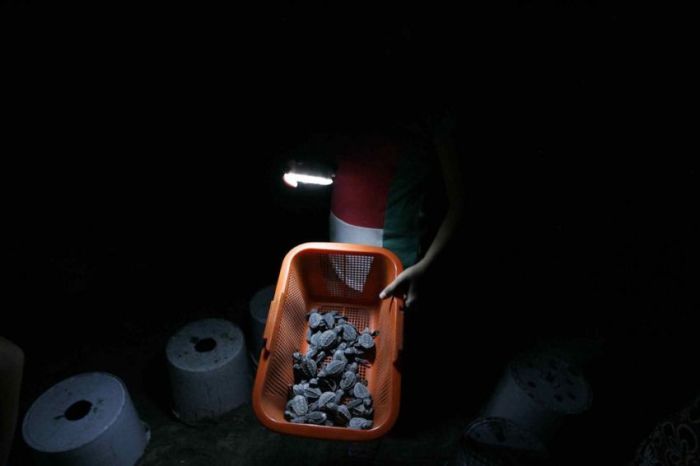|
|
Saving Baby Turtles, Rescue Operation
|
Turtles have a rigid beak. Turtles use their jaws to cut and chew food. Instead of teeth, the upper and lower jaws of the turtle are covered by horny ridges. Carnivorous turtles usually have knife-sharp ridges for slicing through their prey. Herbivorous turtles have serrated-edged ridges that help them cut through tough plants. Turtles use their tongues to swallow food, but they cannot, unlike most reptiles, stick out their tongues to catch food.
Shell
The upper shell of the turtle is called the carapace. The lower shell that encases the belly is called the plastron. The carapace and plastron are joined together on the turtle's sides by bony structures called bridges. The inner layer of a turtle's shell is made up of about 60 bones that include portions of the backbone and the ribs, meaning the turtle cannot crawl out of its shell. In most turtles, the outer layer of the shell is covered by horny scales called scutes that are part of its outer skin, or epidermis. Scutes are made up of a fibrous protein called keratin that also makes up the scales of other reptiles. These scutes overlap the seams between the shell bones and add strength to the shell. Some turtles do not have horny scutes. For example, the Leatherback turtle and the soft-shelled turtles have shells covered with leathery skin instead.
|
|









